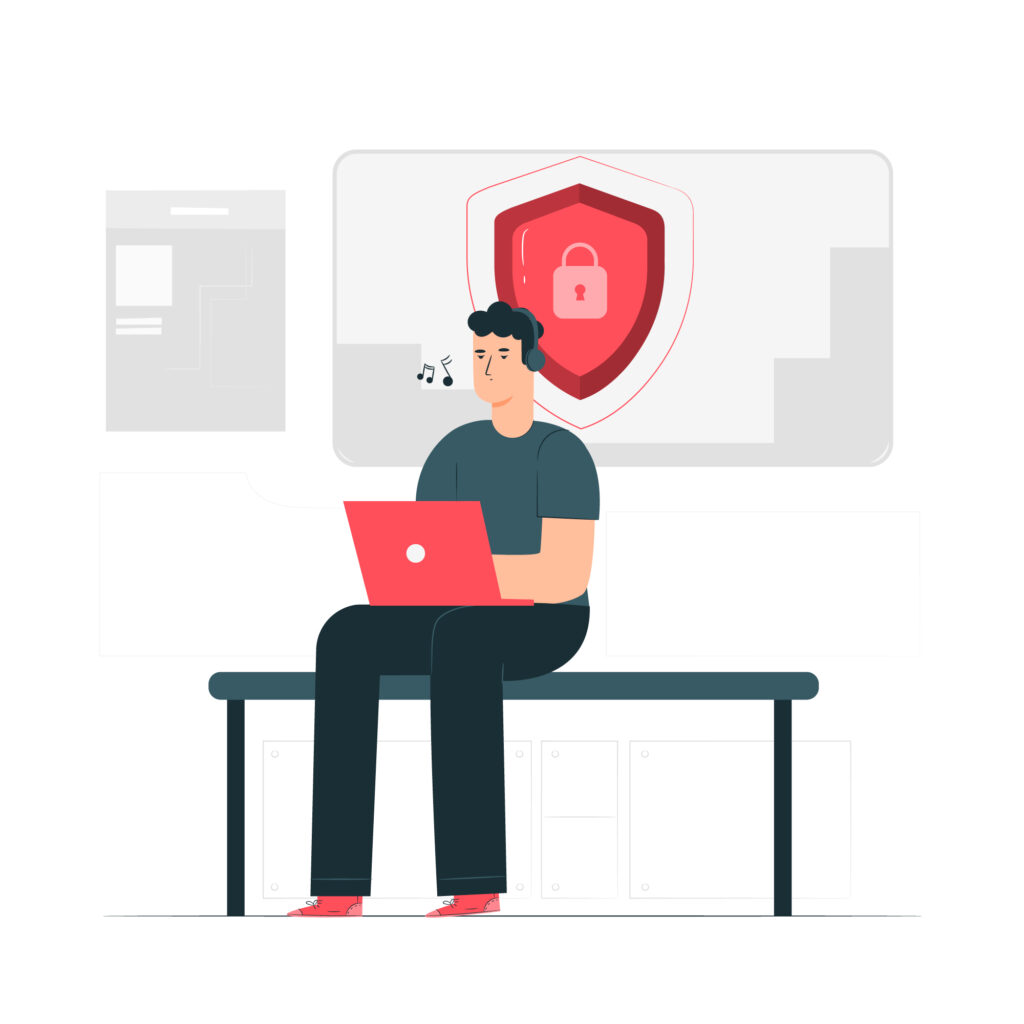 By: John Abhilash / July 10, 2024
By: John Abhilash / July 10, 2024
In In today’s rapidly evolving digital landscape, traditional perimeter-based security models are no longer sufficient to protect organizations from sophisticated cyber threats. Enter Zero Trust Architecture (ZTA), a paradigm shift in cybersecurity that assumes no user, device, or network should be trusted by default, even if they’re inside the organization’s network perimeter. This article will delve into the key aspects of Zero Trust Architecture, providing valuable insights and practical tips to help you transform your security posture.
At its core, Zero Trust Architecture is built on several fundamental principles:
Never trust, always verify: Every access request must be authenticated and authorized, regardless of its origin.
Least privilege access: Users and systems should only be granted the minimum permissions necessary to perform their tasks.
Assume breach: Operate as if your network has already been compromised, and design security measures accordingly.
Micro-segmentation: Divide the network into small, isolated segments to limit lateral movement in case of a breach.
Continuous monitoring and validation: Constantly monitor and analyze user and system behavior for anomalies.
Transitioning to a Zero Trust model requires careful planning and execution. Here’s a step-by-step approach to implementation:
Start by identifying your critical data, assets, applications, and services (DAAS). This forms your protected surface, which will be the focus of your Zero Trust efforts.
Understand how traffic moves across your network, particularly to and from your protected surface. This will help you design appropriate controls and policies.
Create a Zero Trust network architecture that places your protected surface at the center, surrounded by layers of security controls.
Develop policies that govern how resources are accessed, based on the principle of least privilege and the need for continuous authentication and authorization.
Implement continuous monitoring and logging to detect anomalies and maintain the security of your Zero Trust environment.
Several tools and technologies can support your Zero Trust implementation:
IAM solutions are crucial for enforcing strong authentication and authorization policies. Tools like Okta, Microsoft Azure AD, and Ping Identity can help manage user identities and access rights across your organization.
MFA adds an extra layer of security by requiring multiple forms of verification. Solutions like Duo Security, Google Authenticator, and YubiKey are popular choices.
Micro-segmentation is a key component of Zero Trust. Tools like VMware NSX, Cisco ACI, and Illumio can help you create and manage network segments.
SIEM systems like Splunk, IBM QRadar, and ELK Stack can provide the continuous monitoring and analytics capabilities needed for a Zero Trust environment.
EDR tools like CrowdStrike Falcon, Carbon Black, and SentinelOne can help monitor and protect endpoints in a Zero Trust architecture.
Several frameworks can guide your Zero Trust implementation:
The National Institute of Standards and Technology (NIST) provides a comprehensive framework for Zero Trust Architecture in Special Publication 800-207.
Forrester Research has developed the ZTX framework, which outlines seven key pillars of Zero Trust: data, people, networks, workloads, devices, visibility and analytics, and automation and orchestration.
While not strictly a Zero Trust framework, CARTA aligns closely with Zero Trust principles, emphasizing continuous assessment and adaptive responses to security risks.
Automation plays a crucial role in implementing and maintaining a Zero Trust environment:
Automated policy enforcement: Use tools that can automatically apply and update security policies based on predefined rules and real-time risk assessments.
AI-powered anomaly detection: Leverage machine learning algorithms to identify unusual behavior patterns that may indicate a security threat.
Automated incident response: Implement systems that can automatically respond to potential security incidents, such as isolating affected systems or revoking access permissions.
Let’s examine two real-world examples of successful Zero Trust implementations:
Google’s BeyondCorp initiative is one of the most well-known examples of Zero Trust Architecture in action. Following a series of sophisticated cyber attacks in 2009, Google began a multi-year effort to implement a Zero Trust model across its entire infrastructure.
Key components of BeyondCorp include:
Removing the distinction between internal and external networks
Implementing device-level authentication and authorization
Enforcing access policies based on user and device trust scores
Results:
Improved security posture against both external and internal threats
Enhanced flexibility for remote work and BYOD policies
Simplified IT management and reduced reliance on VPNs
Zscaler, a cloud security company, implemented a Zero Trust Architecture for its own operations. Their journey provides valuable insights for other organizations:
Key steps in Zscaler’s transformation:
Eliminating their internal network and moving all applications to the cloud
Implementing strong identity and access management controls
Enforcing least-privilege access policies
Results:
90% reduction in the attack surface
Improved visibility into user and application behavior
Significant cost savings from reduced network infrastructure
To maximize the effectiveness of your Zero Trust Architecture implementation, consider these best practices:
Start small: Begin with a pilot project focused on protecting your most critical assets.
Educate stakeholders: Ensure that all stakeholders understand the principles and benefits of Zero Trust.
Continuously assess and adapt: Regularly review and update your Zero Trust policies and controls.
Embrace automation: Leverage automation to enforce policies and respond to threats in real-time.
Focus on user experience: Design your Zero Trust implementation to be as seamless as possible for end-users.
Implement strong identity verification: Use multi-factor authentication and continuous authentication methods.
Encrypt data in transit and at rest: Ensure that all data is protected, regardless of its location.
Conduct regular security assessments: Perform penetration testing and vulnerability assessments to identify weaknesses in your Zero Trust implementation.
To measure the success of your Zero Trust implementation, track these Key Performance Indicators (KPIs):
Time to detect and respond to security incidents
Number of policy violations
User satisfaction with access processes
Reduction in the number of successful attacks
Cost savings from reduced infrastructure and simplified management
Percentage of assets and resources covered by Zero Trust policies
Mean time to grant or revoke access
Number of unauthorized access attempts blocked
While Zero Trust offers significant security benefits, it’s not without challenges. Here are some common challenges and strategies to overcome them:
Complexity:
Solution: Start with a phased approach, focusing on critical assets first. Use integrated platforms that combine multiple Zero Trust capabilities.
Cultural resistance:
Solution: Conduct thorough training and awareness programs. Demonstrate the benefits of Zero Trust to employees, emphasizing improved security and flexibility.
Integration with legacy systems:
Solution: Use proxy-based Zero Trust Network Access (ZTNA) solutions to integrate legacy applications without modifying them.
Cost:
Solution: Prioritize investments based on risk assessment. Consider cloud-based Zero Trust solutions that can reduce infrastructure costs.
Performance concerns:
Solution: Implement caching mechanisms and optimize authentication processes. Use edge computing to reduce latency in access decisions.
Cloud platforms offer powerful capabilities for implementing Zero Trust:
Cloud Access Security Brokers (CASBs): Tools like Microsoft Cloud App Security and Netskope help enforce security policies across cloud services.
Secure Access Service Edge (SASE): SASE combines network security functions with WAN capabilities to support secure access from any location. Vendors like Zscaler and Palo Alto Networks offer comprehensive SASE solutions.
Zero Trust Network Access (ZTNA): ZTNA solutions like Zscaler Private Access and Akamai Enterprise Application Access provide secure, granular access to applications.
As you embark on your Zero Trust journey, keep these future trends in mind:
AI and Machine Learning: Expect more advanced AI-driven security analytics and automated response capabilities.
IoT and Edge Computing: Zero Trust principles will need to extend to IoT devices and edge computing environments.
Quantum Computing: Prepare for the impact of quantum computing on encryption and authentication methods used in Zero Trust.
Zero Trust Data: The focus will shift towards applying Zero Trust principles directly to data, regardless of its location or state.
Behavioral Biometrics: Advanced user behavior analytics will play a larger role in continuous authentication and authorization decisions.
By embracing Zero Trust Architecture and staying ahead of these trends, you can significantly enhance your organization’s security posture and better protect your critical assets in today’s complex threat landscape. Remember, transitioning to Zero Trust is a journey that requires ongoing commitment and adaptation, but the benefits in terms of improved security and operational flexibility are well worth the effort.
Check Out our Other Resources : Master ASPM :Build a secure strategy







Leave a Comment